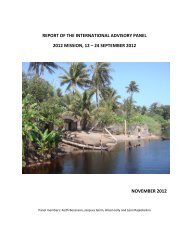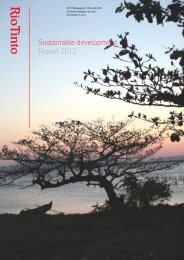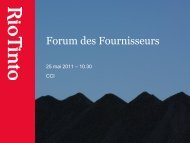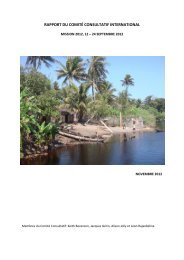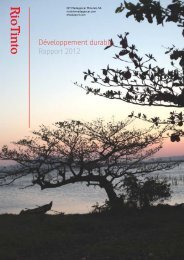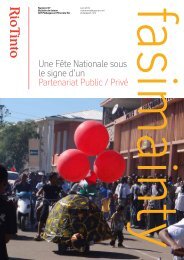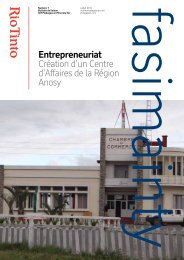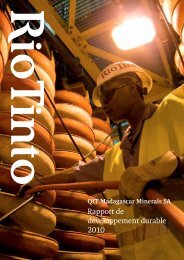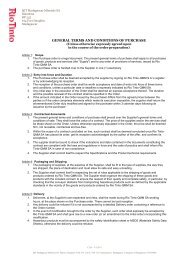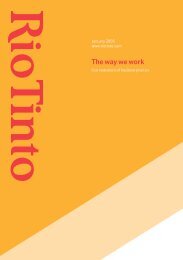Tracking Development - Rio Tinto - Qit Madagascar Minerals
Tracking Development - Rio Tinto - Qit Madagascar Minerals
Tracking Development - Rio Tinto - Qit Madagascar Minerals
Create successful ePaper yourself
Turn your PDF publications into a flip-book with our unique Google optimized e-Paper software.
The Production Phase<br />
managing natural resources<br />
The littoral forests in which the three deposits are located<br />
are a particularly threatened forest type, containing highly<br />
localised plant and animal species. QMM’s goal since the<br />
beginning of the project has been to protect the unique<br />
biodiversity of the area and to achieve a net positive<br />
impact (NPI) on biodiversity. To ensure this biodiversity is<br />
preserved, for nearly 20 years QMM has worked on different<br />
programmes including conservation, rehabilitation of land after<br />
mining, restoration of natural ecosystems and the sustainable<br />
utilisation and management of local natural resources.<br />
Flora and fauna species have also been exceptionally well<br />
identified though QMM sponsored research. Recognition of<br />
these efforts was demonstrated in 2009 when QMM was<br />
awarded the esteemed Nedbank Green Mining Award in<br />
the environmental category. The award honours a company<br />
that has made a significant effort in terms of protecting or<br />
improving the biophysical environment in which it operates.<br />
Seventy permanent and more than 100 non-permanent<br />
employees, 80 per cent of whom are from the communities<br />
bordering Mandena, work for the biodiversity programme.<br />
Established in 2002, the Community Reforestation<br />
Programme’s objective is to plant 100ha of fast growing trees<br />
per year to supply local communities with wood for fuel and<br />
charcoal around the mining sites. In addition, a regional tree<br />
nursery was established in 2005, in partnership with USAID,<br />
to provide a sustainable source of fuel for the population<br />
and to reduce pressure on natural forest remnants. To date,<br />
more than 1000ha have been reforested with approximately<br />
1.5 million trees.<br />
QMM has been using “green engineering” to stabilise<br />
infrastructure around the project and haul roads. The<br />
production of 2.5 million Vetiver (Vetivera zizanioides), a<br />
non-invasive species known for its high capacity to combat<br />
erosion, created hundreds of jobs and generated hundreds<br />
of dollars of net income for local populations during the<br />
construction phase. This activity continues to sustain local<br />
agricultural associations today.<br />
Mahampy (Lepironia mucronata) is a reed species growing<br />
in the wetlands of Mandena and across the region. The<br />
reed, known as mahampy in the local Malagasy dialect, is an<br />
indispensable resource for the local population. Harvested<br />
and used to make various types of basketry through braiding<br />
and weaving, mahampy represents a substantial economic<br />
and cultural component within the Anosy region.<br />
The first trials to restore the mahampy reed were<br />
conducted in 1999 with the help of women’s associations.<br />
Fifty women from villages surrounding Mandena were<br />
actively involved and integrated in the experiment. Despite<br />
initial scepticism expressed by participants with respect to<br />
the viability of rehabilitating the mahampy reed beds, after the<br />
first harvest of exceptional quality mahampy, the association<br />
thrived and presently includes 186 women.<br />
54



